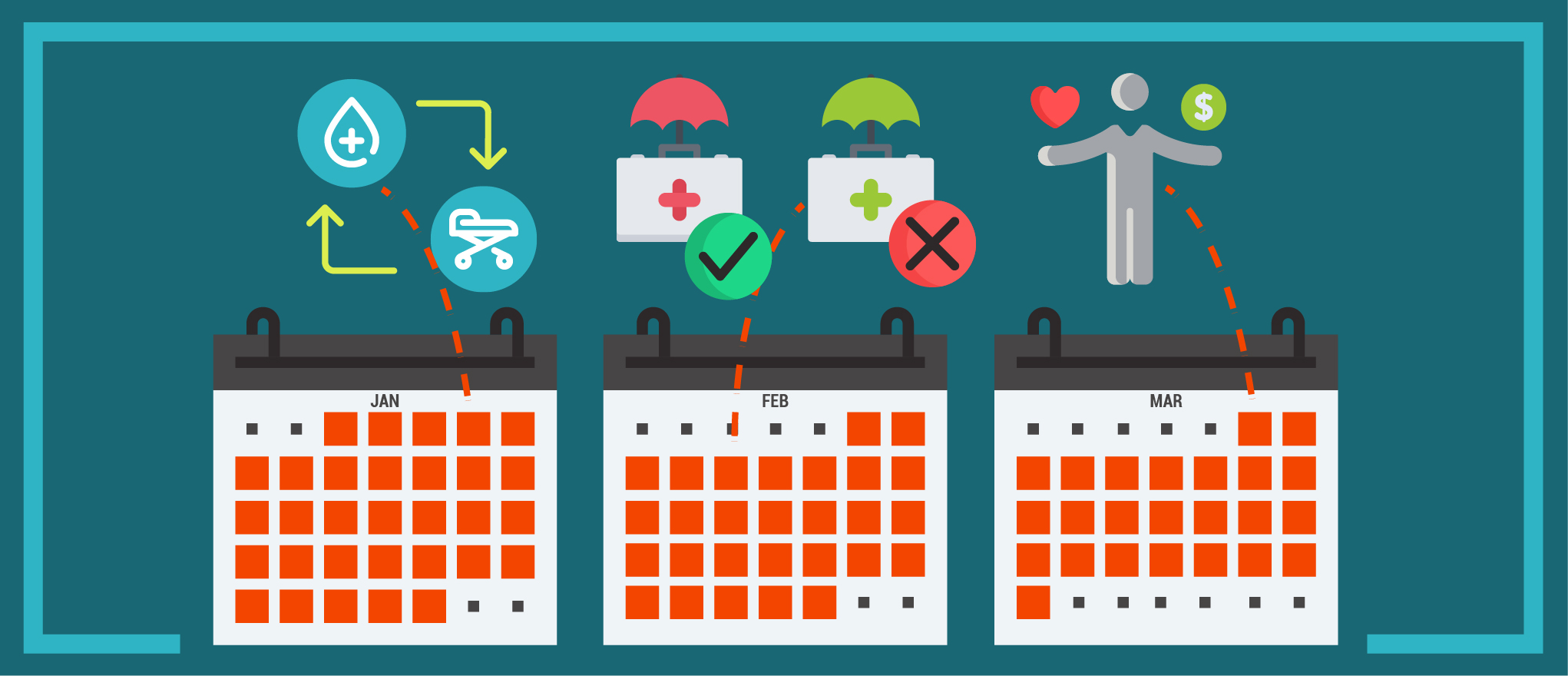Making the Most of Medicare’s Open Enrollment Period (OEP)

The extended period known as Medicare Open Enrollment Period (OEP) is back. Between January 1 and March 31, 2019, consumers are now allowed a one-time switch between Medicare Advantage (MA) plans or to go back to traditional Medicare. While it was eliminated in 2010, OEP has been brought back to allow Medicare beneficiaries to switch from an unsuitable MA plan to one that better meets their needs. As the Centers for Medicare and Medicare Services (CMS) point out, extended open enrollment is not a marketing opportunity; you cannot reach out to Medicare-eligible consumers and try to convince them to switch. Insurers can use the onboarding opportunity to build a strong rapport with their new members and minimize switching behavior. Here are a few bits of advice for health insurers and healthcare marketers to retain members during OEP.
Enhance your new member communications.
Onboarding is an important first step in building a solid relationship with your new members. Engaging with them right away will help make them feel welcome, and in turn, less likely to switch to a competitor. Provide members with educational content about plan offerings and services available (such as concierge medicine, ancillary benefits and member rewards programs). Content marketing such as videos, blog posts, and social media content can also boost member health literacy and show Medicare Advantage members how to get the most out of their plan including self-service tools, drug price comparisons, how to access ID cards, pay bills online, and where to locate urgent care centers.
Survey your members, and find a way to use the data effectively.
Health assessments are a great way for plans to understand member health, member needs and even communication preferences. Not long ago, we wrote about Medicare Advantage members with chronic conditions and how they prefer to engage with their plans about their health. Once you have that data in front of you, think about how to apply it effectively. For example, you can reach out to members with specific conditions with educational information, follow-up opportunities and health improvement services offered to them. Boosting communication and engagement can improve member care and satisfaction, health outcomes and retention.
Personalize your communication.
Younger Baby Boomers are aging into Medicare, and they are much more tech savvy. Welltok recently surveyed over 1,000 adults ages 65 and over across the U.S. One of the trends that they found was that though seniors still prefer direct mail and phone, they are using digital technology more frequently. For example, younger seniors prefer communication with their plan via email while those ages 75 and over still prefer phone. They also found that Medicare Advantage members are more likely to prefer email communication compared to traditional Medicare members. The biggest takeaway from all of this is that communication cannot be “one-size-fits-all.” It’s a great idea to ask your members about their preferred method of communication and personalize your messages. Start thinking about supporting different communication channels from mail and phone to digital and chat features for multiple touchpoints. If you have not already done so, consider investing in customer relationship management (CRM) technology, as it can help you manage communications and make them more efficient.
“Did you know…?”; Remind your members about ancillary benefits.
Ahead of the 2019 plan year, CMS expanded the definition of “primarily health related” supplemental benefits for Medicare Advantage plans. These ancillary benefits, as they are often called, can include transportation, grocery delivery or smoking cessation services. We know that these new benefits cannot, by rule, be provided as an inducement for members to enroll. We also know, based on insights from sources such as Deft Research’s Medicare Shopping and Switching Study that top reasons for switching are premium increases, drug coverage, network access issues, dental coverage issues and referral/authorization issues. But these ancillary benefits can help set your Medicare Advantage plan apart in an increasingly saturated market. During extended open enrollment, take the time to communicate the availability of these benefits to members, especially if they are not fully aware that they exist.
Promote your plan’s star rating.
If you’ve got it – flaunt it! Deft also tells us that members enrolled in a 5-star plan are less likely to shop for a new plan during AEP, and also less likely to switch overall. As a health insurer, if your plan has a high star rating, share this with your members. You may also be surprised to find that many Medicare Advantage members are unfamiliar with the star ratings system. HealthMine recently surveyed 781 Medicare Advantage members with chronic conditions and found that only 22% are familiar with star ratings. Star ratings provide consumers with objective way to compare member satisfaction, quality measures and patient safety.
Medicare AEP marketing is about letting Medicare-eligible consumers know about your plans and their offerings. Your goal is to attract new members and retain existing ones. Now, during extended open enrollment, it’s time to bring those members closer to your plan. Establish a connection between members and your health plan and become something that they can count on to improve your overall health. This will go a long way in boosting member loyalty. A lot of these ideas presented can also be applied to New-to-Medicare marketing strategies to aid in retention there as well.









